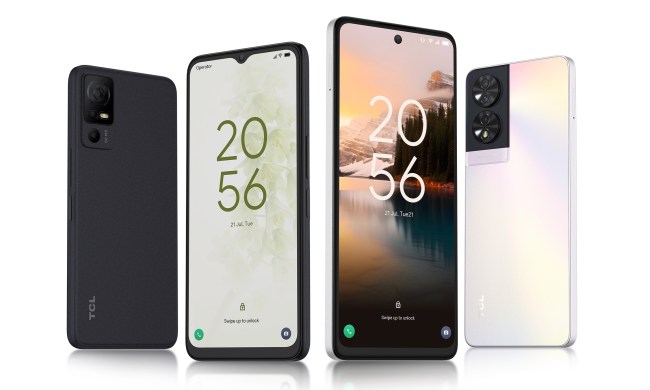
Forget Ebola, our smartphones are all set to become the next fatal epidemic sweeping the world.
The problem is that we include our phones in everything we do, regardless of what it is, where, and with whom. The warning signs they could be turning against us have been visible for a while, yet we haven’t heeded them. Things escalated recently with the death of a Polish medical student, after she tragically plunged to her death while trying to take the perfect selfie. The accident followed a rash of equally dangerous selfies taken with bears. We’re not talking about Pooh or Paddington, but big, scary bears with teeth and claws — and for all we know, a problem with vain morons holding a smartphone.
Forget about the privacy and security scare stories, the real risk in modern phone ownership is us disregarding our own safety, or that of others around us when we’re using these things. This isn’t just a casual observation, it’s a shockingly well documented phenomenon, and if we don’t start to change our ways, our phones will see us all being measured up for coffins.
A thousand ways to die
You want proof? There’s plenty, and although it starts out innocently enough, it gets much worse. A survey of smartphone owners in the U.K. revealed a massive 86 percent of those polled had suffered an injury as a result of tripping, falling, or walking into a lamppost while using their phones. A doctor interviewed said she had seen a lot of mobile-related injuries in her surgery over the past year, and only expected the problem to get worse. Almost all were due to clumsiness, or lack of attention.
Forget about all the privacy and security scare stories, the real risk in modern phone ownership is us disregarding our own safety.
Humans have bumped into things for centuries, and have (mostly) lived to tell the tale. It’s when we stop brushing ourselves off because we’re missing limbs that’s the problem, and it’s headed that way now. In 2013, the Tokyo Fire Department noted a 50 percent increase in injuries where people were knocked down while crossing the road using their phones. The number of incidents is fewer than 50, but this is only the beginning, and it’s about to get really worrying.
A study commissioned by AT&T revealed that of the insufferable cretins who text while driving, 98 percent are aware of the dangers, and 75 percent of that number still do it. With shocking egotistical abandon, they believe they can “easily do several things at once, even while driving.” This is rubbish, unless you have independent control over each eye like a chameleon. Statistics show drivers are 23 times more likely to crash while texting, and in reality the practice kills 3,000 teenagers in the U.S. each year. In many of these cases, it’s a pedestrian who comes out worst.

In this case from Scotland, a driver using her phone hit and killed another woman crossing the street. In London, a contractor didn’t notice the truck that would kill him seconds later, due to receiving a phone call as he walked out in the road.
None of these are isolated incidents, proving we can’t control ourselves when walking down the street, or in the car. It doesn’t stop there. At least 50 percent of surveyed 18-29 year-old Americans use their phone while on the toilet, despite warnings about massive amounts of harmful bacteria accumulating on the screen. Opticians are warning staring at smartphones will damage our eyes, doctors tell us out posture is being ruined due to the way we hold the devices, and psychologists have noted anxiety, depression and other behavioral problems in children who have been identified as excessive phone users.
Don’t let them determine our fate
Taken individually, these are little more than anecdotes. A blip on the stellar timeline of the digital age. However, put them all together and it’s overwhelming evidence our phones are ruthless killers in the making. How can they be stopped? It’s simple. We need to stop being obsessive, phone-touting fools who think we’re indestructible, and start using them respectfully. That said, it’s important to make the distinction between dangerously using a mobile device when driving or standing on the edge of a precipice and using one in general.
This is rubbish, unless you have independent control over each eye like a chameleon.
Staring at our phone while sitting at a bus stop, having dinner, or even having sex isn’t dangerous. Not everyone will give you a round of applause, but whatever made you grab your phone at that moment must mean the overall situation isn’t meeting expectations. Compared to taking selfies with bears, it’s the behavior of a rational, normal human being, and outside of being punched by your intimate partner, unlikely to be the cause of a hideous, life-threatening injury.
The ease with which smartphones have been integrated into our lives has seen us ignore the very real dangers that come with using a device that seems so friendly, but is in fact the prospective orchestrator of our very own scene in Final Destination. The bleeding hearts who bang on about phones ruining our social lives, or shutting out our fellow humans are missing the point. We shouldn’t temper our phone usage for these frivolous reasons — but because if we don’t start to exercise some restraint, they could actually be the death of us.
Lead image courtesy of Photographee.eu/Shutterstock



